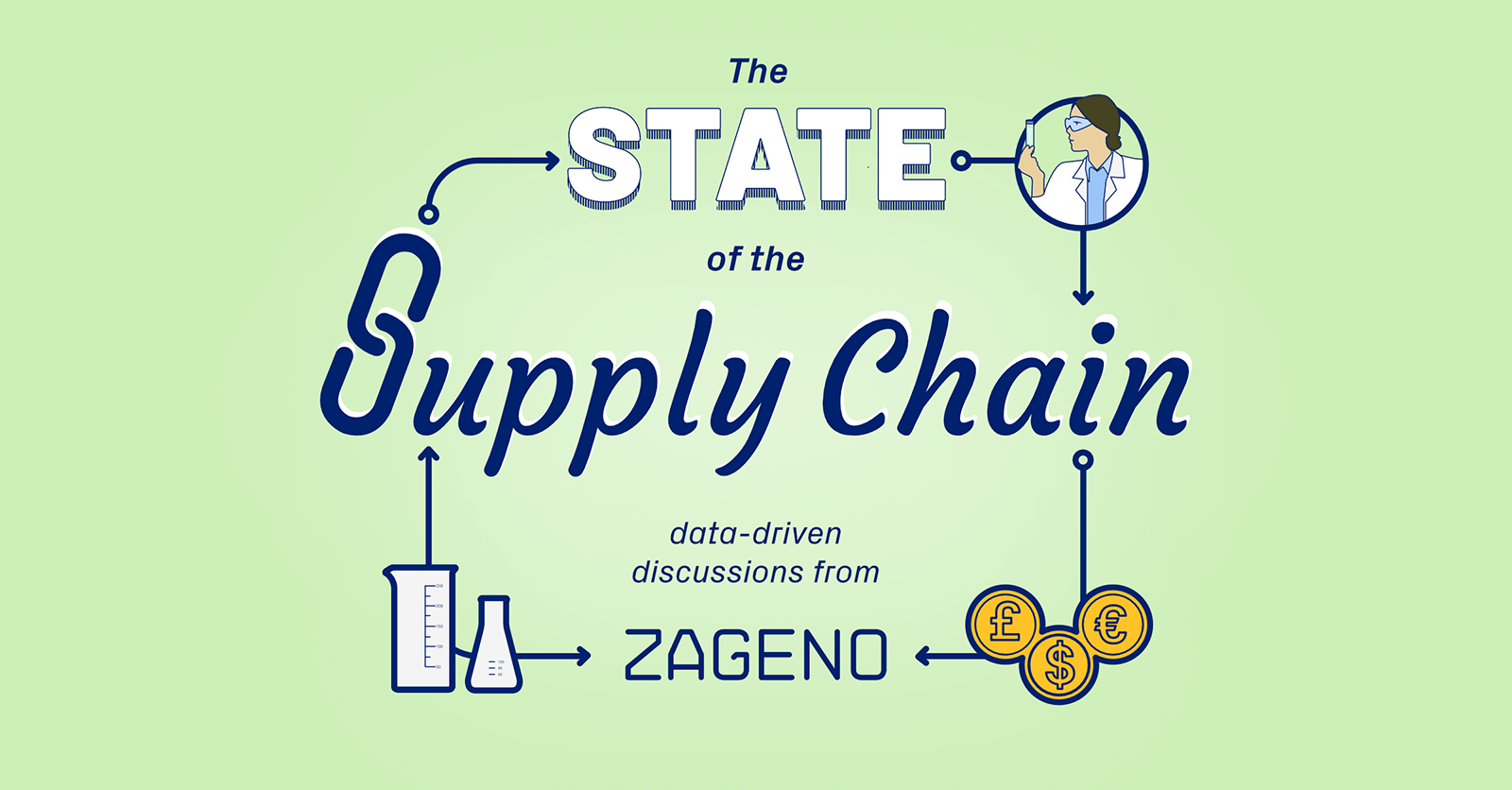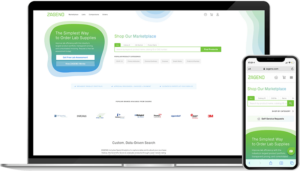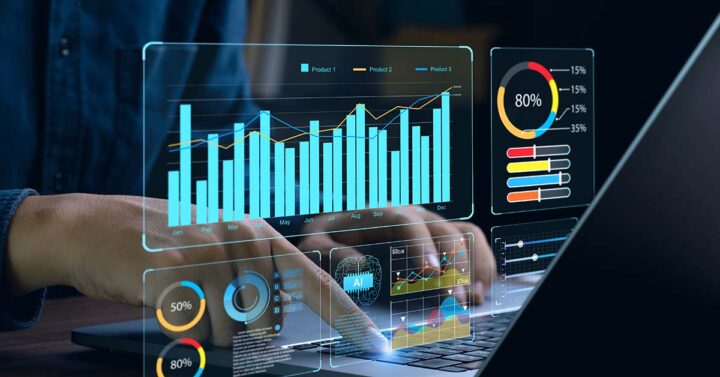The State of the Supply Chain: Q3 2021

Hello and welcome back to the State of the Supply Chain for Q3 of 2021
Returning listeners will recall that in the first episode, in this series, our head of customer success, James Pavlovich shared ZAGENO data detailing the challenge that backorders and lead times are presenting to lab teams and provided tips on how to navigate those issues.
I'm glad to say he's back and happy to report that he's brought along his spreadsheets and his pie charts.
James, welcome back.
Thanks, Greg, it's good to be back. And just to give you a quick update from our last discussion, — the deep dive into the lead time and backorders — it's still an ongoing challenge. So, if listeners out there are struggling with that, I definitely encourage them to go back and listen to that discussion with us, as well.
So, this quarter, we're going in a different direction with a focus on product costs and savings. Elaborate on this for me, James.
I'm happy to.
Let's begin by looking beyond just the cost of the lab supplies because the overall operational costs of running today's labs are enormous. I suspect that it's not something that's widely known or talked about, but the experts that we've spoken with the estimate that depending on the size, the cost can range anywhere from $10-$40,000 a day to run a biotech and as much as $100,000 a day for some pharma. So again, the cost to just stand up these organizations creates huge headwinds. That's why there's an appetite for solutions to cut costs, where they can.
“...operational costs of running today's labs are enormous...experts that we've spoken with estimate...the cost can range anywhere from $10-$40,000 a day to run a biotech and as much as $100,000 a day for some pharma. That's why there's an appetite for solutions to cut costs, where they can.”
Now our focus is as a savings mechanism for the procurement of lab supplies — specifically preclinical R&D lab supplies, which have a market size of around $60 billion.
Now since 2015, ZAGENO has placed a bet in identifying savings for this part of the industry. And now for the very first time, we're sharing the data on these savings that our customers are realizing today.
This is really exciting. We've been in business now - this will be our 6th year - and it's the first time we're actually showing this data outside of our organization. So let's dive into it.
What I have in front of you here is your classic spreadsheet. We've got five columns to look at…
- On the far left it says organization...okay, these are ZAGENO customers.
- And the second is labeled “Sum of Invoice Amount.”
- Besides that is “Sum of Higher Price Amount.”
- And finally, the last two are…
- “Sum of Savings” and the “Sum of Savings as a Percentage.”
These are all pretty self-explanatory, but if you would walk us through what we're seeing here.
So first of all, Greg, I think everyone needs to be aware that managing a large number of prices is no easy task. And when we speak to some larger pharma organizations, they spend months and have huge data teams that try to tackle this exact problem that we're going to walk through.
And suppliers are also very protective of their pricing, especially when they have very specialized products. But let's dive in.
The labels, as you saw, were pretty self-explanatory but to sum it up this really provides an overview from a year-to-date perspective. So, in the first nine months of this year, what are the comparisons of the actual invoice price for these products to the list price that alternative suppliers have available for that exact same product.
Now, for further transparency let me point out that, in some cases, the invoice price also takes into account a previously negotiated discount with that particular manufacturer and supplier and we'll dig into that as we keep going.
Okay. That makes sense.
Now, there are two things I want to show you from this chart.
The first is the actual, annual savings experienced by one of our customers. And up until this point of this year, they've spent $1.2 million in lab supplies and their total savings is 19% or $240,000.
“...the actual, annual savings experienced by one of our customers. And up until this point of this year, they've spent $1.2 million in lab supplies and their total savings is 19% or $240,000.”
Now of that $240,000, 73% of that is savings coming from the marketplace by simply comparing prices across suppliers. And for this particular customer, their biggest savings are coming in from pipette tips and primary antibodies, as product categories.
Now, most accounts have a mix of negotiated savings and marketplace savings and we often see customers joining group purchasing organizations to take advantage of these discounts or they'll negotiate with one or two strategic suppliers that will be crucial to their success as an organization. Now on top of that, they're using a marketplace, where they're realizing more product savings because of the simplicity to actually find these new suppliers.
So the combination is what we see as most common.
Wow! 73% of that $240,000 comes directly from their subscription, their membership, if you will, in ZAGENO. That's a stunning amount of money.
This whole idea of price transparency puts me in mind of this story that is trending in the news about food delivery services. I read an article recently about the city of Chicago. And they're suing these food delivery services for, among other things, deceiving the customer.
The suit is basically around a claim that they've concealed lower prices that restaurants are offering directly to their customers outside of their platforms. And so the correlation for me is that we're a platform, a marketplace, which is lifting the lid on customer pricing and life science.
Do you see an irony here; do you see any correlation or is it just me?
No, I do see the irony and I know about that story. And while I can't speak to the emerging market, like food delivery, I can say that in life sciences, there has been a long track record where pricing was solely controlled by the seller, and like other industries, it's just been the status quo.
And that's changing, that's been impacted by a subscription-based economy and being able to have further transparency of information, just like what we're talking about, today. And so really the structure is recalibrating right in front of our eyes where buyers are becoming more informed and have more information to make a choice.
“...in life sciences, there has been a long track record where pricing was solely controlled by the seller, and like other industries, it's just been the status quo. And that's changing, that's been impacted by a subscription-based economy and being able to have further transparency of information...”
Yeah, it is fascinating. Okay. I want to get back to the data. You have a couple of other items to share. The first, I believe, is a deeper cut into the same data set. You just showed us, but this time DTA. The product categories, bringing the most savings. Please walk us through what you're seeing, here.
Yeah. So we want to identify some of the key categories where the customers are consistently seeing savings, across the board. And in this chart, you can see that the solvents category is leading the way. Solvents are typically used in high volumes. It's used quite a bit, so this one's not really surprising.
The other big category is primary antibodies. The primary antibody was a bit of a surprise because there's a lot of different antibodies out there. There's a lot of manufacturers and the scientists that we talked to say that, when they're running experiments, they have very strong preferences on the specific antibody to a specific manufacturer, but clearly, there is a broad range of pricing for the same antibody across multiple suppliers.
That's really interesting. What do you think that implies?
This really means that when you're purchasing solvents or primary antibodies, it's really worth it to compare the pricing and see where you can get the best price. Of course, with today's supply chain challenges, we hear that availability is more important than price for critical supplies, but, given the opportunity, if you've got the time it's definitely worth it to compare those prices and make an educated decision before you actually make the purchase.
“...when you're purchasing solvents or primary antibodies, it's really worth it to compare the pricing and see where you can get the best price.”
Yeah, I guess there is a notion that time is money in some cases, but certainly, understand where people are willing to pay a premium for availability.
You have a final bit of data to share with us, which actually does not come directly from our marketplace but it's a very interesting way to look at the data you just shared with us. Why don't you walk us through what you're seeing, here.
I know it's actually a fun way to look at the value of the ZAGENO subscription, but in all seriousness, this is real savings - this is real money that customers can do things with.
And so consider staffing issues. I had just popped up to a recruitment website and I know it's not comprehensive. I see an opening here for a research scientist for a very well-known organization, here in Boston, with a salary range of $60-100,000. And a separate listing for a lab operations manager, in nearby Waltham, and that's listed between $70-80,000.
So if you go back and look at our previous customer's example, if they have $240,000 in savings that they're realizing, it's quite reasonable to look at these savings on lab supplies and reinvest in key staff and key FTEs that will help increase productivity the efficiencies in the lab to reduce the time to meet their milestones.
“So, it's really incredible to see all the opportunities here where you take that first example that we talked about, where the customer has $240,000 in savings. Very easily that could be two additional scientists that could do additional work for that organization.”
But if we do look at the savings being reappropriated to buy more supplies, that's another way to look at this where you can do additional experiments, you can start new projects, and look at other indications or other medicines to invest in.
So, it's really incredible to see all the opportunities here where you take that first example that we talked about, where the customer has $240,000 in savings. Very easily that could be two additional scientists that could do additional work for that organization.
Great set of data, James. I like the way you actually put it, it's real money that customers can do real things with. I've taken three things away from today's conversation.
The first is this is an awfully expensive business to operate - from all perspectives — so finding savings, where you can, should always be a priority.
The second thing is that whether you're negotiating prices through a group or subscribing to a service like the ZAGENO marketplace, there are savings to be had on the products that this industry requires all the time.
And finally, this is a really interesting way to look, not only at how it is (that) customers are finding savings on the products they need but what you can consider when you’re looking at, what am I going to do with all that savings?
James, thank you so much for bringing this to us. A fascinating look at the advantages of being part of this subscription service and I look forward to our next episode. Thanks again.
Thanks a lot, Greg.


